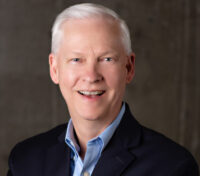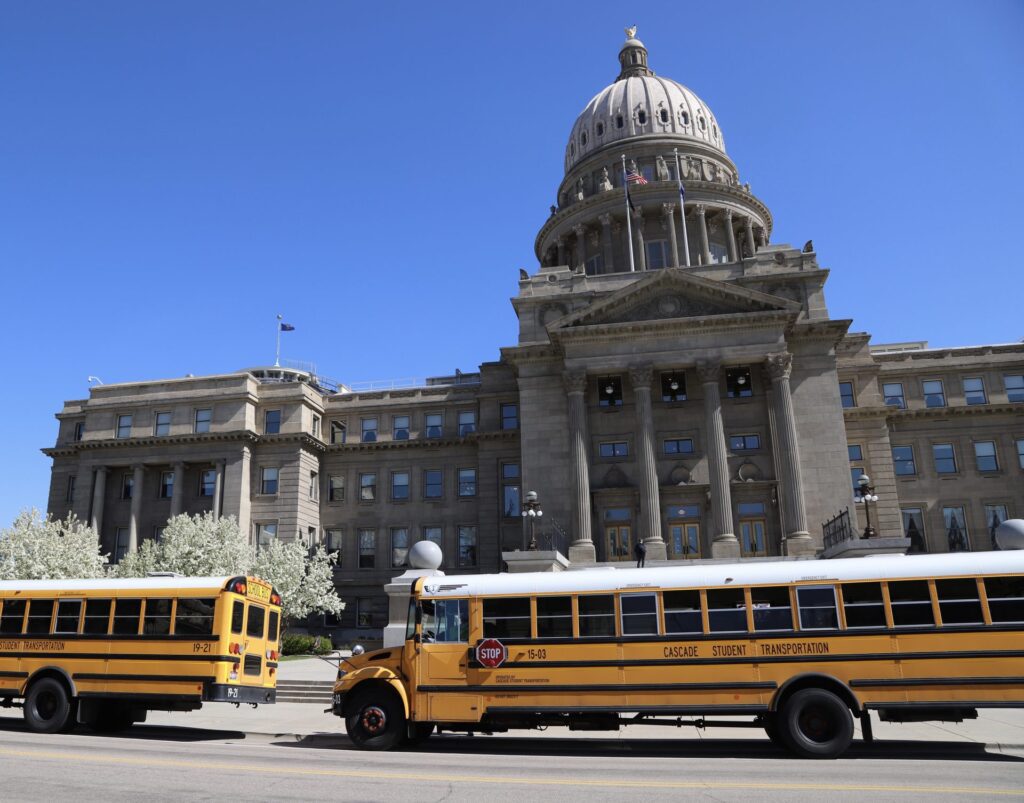A typical private school family could be refunded all of its state taxes — and then some — by claiming Idaho’s new Parental Choice Tax Credit.
That’s according to an Idaho Education News analysis of tax bills for the Spud Family, a hypothetical middle-class household created by the Associated Taxpayers of Idaho (ATI). The nonpartisan advocacy group uses the fictional family of four to illustrate the impacts of tax policies.
ATI gave EdNews a breakdown of the Spud Family’s tax obligations based on its $137,138 annual income. And EdNews factored in the state’s new refundable tax credit for private school and home-school expenses, which Republican policymakers enacted earlier this year through House Bill 93.
Claiming a maximum $5,000 credit for each of the Spuds’ two children would net a 32% reduction in the family’s combined federal, state and local taxes. The credits would cover all of the family’s state income taxes while producing a sizable refund that could offset most other state and local taxes.
Real-life recipients of the Parental Choice credits will see varying impacts, depending on how many children they have and their individual education expenses, along with the family’s income, spending and other factors that influence tax obligations.
But the Spud Family illustration shows the credits will provide a significant incentive to attend non-public schools.

Here’s how much the Spud Family would save on taxes
House Bill 93 created Idaho’s first private school choice program, after a contentious Statehouse debate over unlocking public funds for private school tuition. Most GOP lawmakers supported the bill, and Republican Gov. Brad Little signed it into law.
The new program offers private school and home-school students up to $5,000 in refundable tax credits for qualifying education expenses, including tuition, tutoring, textbooks and curriculum. Students with special needs can claim up to $7,500.
Eligibility is universal, meaning anyone can apply, regardless of income, and there’s no limit to how many credits a single household can claim. The credits also don’t qualify as taxable income.
While recipients aren’t automatically entitled to the full amount — they’re refunded for actual expenses — tuition and fees at a typical private school would quickly max out the refundable credit. Watersprings School in Idaho Falls, for example, charges $5,835 for K-5 tuition, and Bishop Kelly High School in Boise charges $9,650 for parishioners.
Potential recipients first have to apply, however, and the program is capped at $50 million. Applications open in January. Priority will go to households earning 300% or less of the federal poverty limit — $96,450 in household income for a family of four. The Spuds would not qualify for the priority category.
But if the Spud Family got in before the cap, here’s what their taxes could look like in 2026:
- Federal income tax: $10,691.
- Social security/Medicare: $10,491.
- State income tax: $4,924 + $10,000 ($5,000 Parental Choice Tax Credit x 2) = $5,076.
- Property tax: $2,570.
- Sales tax: $1,727.
- Grocery sales tax: $515 + $620 (grocery tax credit) = $105.
- Other taxes and fees: $1,291.
- Total: $21,589.
These estimates, calculated by ATI, incorporate tax cuts approved by the Legislature earlier this year. EdNews factored in the Parental Choice credits.
The credits would refund the Spuds’ state income taxes, and they’d get $5,076 back — enough to offset their state sales taxes and local property taxes, as well.
Of course, the Spud Family is just one example, and the impact of the Parental Choice credits on individual households will vary. For instance, the benefits will wane with higher incomes or fewer children and grow with lower incomes and more children.
As Watersprings School notes in an online FAQ, “Each eligible child in your household can receive the tax credit, meaning larger families can benefit significantly.”
Advocates debate fairness of tax credit
Advocates on either side of HB 93 had, unsurprisingly, mixed reactions to the Spud Family’s scenario.
Rep. Wendy Horman, a co-sponsor of the bill, said the Parental Choice credit is one of several tax incentives the state offers, reflecting investments that Idaho values. The state also offers a grocery tax credit — $155 per person — and an educational charity credit — $500 per person — along with tax deductions for first-time homebuyers and college savings accounts, among others.
“We’re offering this tax credit because we trust parents to place their child in the learning environment where they feel like they’re going to get the best outcome,” said Horman, R-Idaho Falls. “That’s to all of our advantage, because when our children succeed, Idaho succeeds.”

And critics must consider the savings that private- and home-schoolers have already provided to the state, Horman said.
She pointed to a Mountain States Policy Center (MSPC) analysis that argued Idaho’s roughly 36,000 non-public school students have saved taxpayers more than $2 billion since 2015 by not utilizing the public school system.
MSPC president and CEO Chris Cargill wrote in the analysis that it’s challenging for non-public school families to pay into both private and public school systems.
“The total cost of this program is $50 million,” Cargill said in an interview last week. “So, if you’re going to ask me, ‘Is that fair?’ No, I think it’s unfair in the opposite direction. I think families have actually put a lot more money into the system than they’re actually getting back.”
This argument is “bogus,” said Rod Gramer, former president and CEO of Idaho Business for Education, which opposed HB 93. Only recently have states made taxpayers responsible for private education, a trend that Gramer attributes to the influence of “out-of-state billionaires and certain state legislators.”
“For generations, it was never an issue,” he said. “Americans knew that they had to support their public schools, and it was their choice to send their kids to private and parochial schools.”
And the Spud Family example highlights that some private school families will be refunded more than they contribute to public schools, Gramer said.
Tax policy experts reached by EdNews didn’t have data breaking down what percentage of taxes benefit K-12 public schools. But the Spuds would be refunded all of their state taxes — taxes that support public education as well as roads, police, health and welfare and other state services. About half of the state’s general fund spending supports education.
The refund for private schooling “confounds” the whole concept of taxpayers chipping in to support important public services, even services they don’t use, Gramer said. “I’ve never called the fire department. I’ve never called the police department.”
Will private schoolers save taxpayers money in the future?
Horman and Cargill also argued that $5,000 tax credits are more cost-effective than the state’s per-pupil spending on public education — $8,830 this year — which will save taxpayers money down the road.
There’s some truth to that. Students who transfer out of public school for a private school or home-school option should generate savings to the state. And younger students entering school for the first time will come at a lower state cost if they attend a non-public school.
Students already enrolled in private school are also eligible for the tax credits, however. In states with similar incentives, like Arizona, most of the money has initially gone to students who weren’t previously in public schools.

“It’s not a transfer of money from public schools to private schools,” Gramer said. “It’s a subsidy, largely to families that already have their kids in private school or religious school.”
Enrollment is already trending away from public schooling, Horman noted. While total public school enrollment increased slightly in 2024-25, the kindergarten class was smaller than 12th grade, a reversal from a decade ago, according to data from the Legislative Services Office. In the fall, public schools had 20,773 kindergarten students compared to 24,860 12th-graders.
“This is a natural trend that I was seeing without a tax credit,” Horman said.

